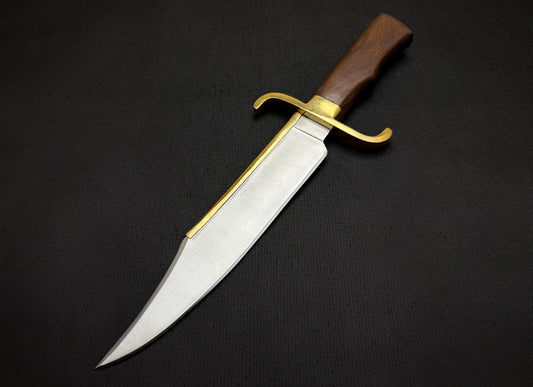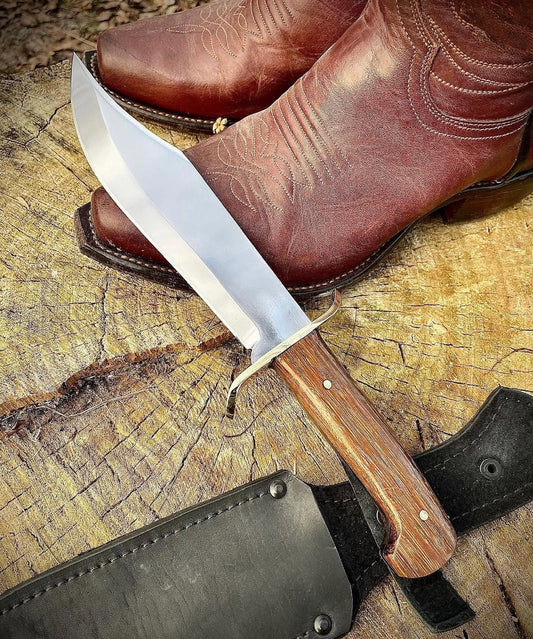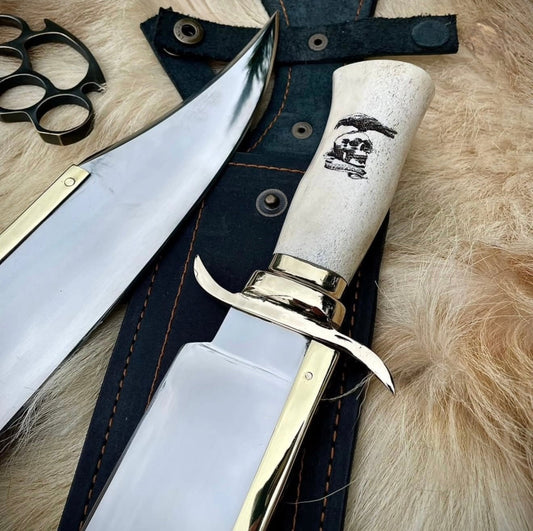Historical Knives – Where Craftsmanship Meets Timeless Legacy
From the fires of ancient forges to the skilled hands of modern blacksmiths, Historical Knives have always stood as symbols of craftsmanship, artistry, and cultural heritage. Each piece tells a story — of explorers, artisans, and the traditions that shaped civilizations. Collectors and enthusiasts treasure these blades not for function, but for their ability to connect us with history through the power of handmade steel and design.
The Legacy of Historical Knives
Owning Historical Knives is like holding a piece of the past. Every curve, handle, and etching reflects the artistry of its era — from medieval blacksmithing to 19th-century frontier craftsmanship. These collectible pieces are inspired by legendary designs, meticulously recreated using forged steel and authentic materials. Whether for display, gifting, or collection, they remind us of humanity’s dedication to form and function.
Why Collectors Love Historical Knives
The world of Historical Knives blends tradition, storytelling, and design excellence. Each knife captures the spirit of a time period and the genius of its maker. Skilled artisans hand-forge these knives using time-honored techniques to replicate the strength and balance of originals found in museums or private collections.
A. Authentic Craftsmanship – Every knife is handmade by expert blacksmiths who use forging methods that have been passed down for generations, ensuring genuine texture and durability.
B. Collectible Heritage Value – These Historical Knives are not just decorative; they’re tangible pieces of art that reflect the beauty of different cultures and craftsmanship styles.
C. Perfect for Display – With intricate detailing, polished blades, and authentic finishes, they elevate any home, office, or gallery display with historical charm.
The Making of True Historical Knives
Crafting Historical Knives requires patience, precision, and an unbroken link to the traditions of ancient metallurgy. The process often begins with high-carbon or Damascus steel — metals favored for their resilience and beauty. Each blade is shaped, heat-treated, and polished by hand to recreate the aesthetics of authentic historical designs. Handles are crafted from wood, bone, brass, or leather, echoing materials used by artisans of the past.
Historical Knives in Modern Times
Even in today’s age of machines, the allure of Historical Knives remains unmatched. Collectors value them for their rarity and connection to legacy. Whether inspired by medieval Europe, Japanese samurai culture, or the early American frontier, each knife bridges eras — transforming history into tangible craftsmanship. They make meaningful gifts for historians, collectors, and anyone who appreciates artistry rooted in tradition.
Owning a Piece of the Past
Adding Historical Knives to your collection is more than an aesthetic choice — it’s a tribute to human creativity and perseverance. These blades inspire respect for the craftsmen who shaped metal with nothing but fire and vision. Every piece in your display can spark curiosity and conversation, keeping the stories of the past alive for future generations.
Why Choose Our Historical Knives Collection
Our collection of Historical Knives is curated for those who appreciate authenticity and handmade quality. Each knife is produced by skilled artisans with over two decades of forging experience. Every detail — from the steel pattern to the handle polish — is designed to mirror the originals that inspired them.
A. Handmade Excellence – Each knife is individually forged, polished, and finished to perfection.
B. Heritage Craftsmanship – Created using traditional forging methods that preserve the essence of old-world design.
C. Collector’s Choice – Ideal for history lovers, collectors, and artisans who admire craftsmanship and authenticity.
FAQs about Historical Knives
Q: What makes Historical Knives different from modern knives?
A: Historical Knives are inspired by centuries-old designs and are made using traditional forging techniques, emphasizing craftsmanship and cultural authenticity.
Q: Are these knives functional or just for display?
A: While many are fully functional, they are primarily created as collectibles and display pieces that highlight artistry and history.
Q: What materials are used in crafting Historical Knives?
A: High-carbon or Damascus steel is commonly used for the blades, while handles feature wood, brass, stag horn, or bone — echoing historical materials.
Q: Can I gift Historical Knives to a collector or enthusiast?
A: Absolutely. They make exceptional gifts for anyone passionate about heritage, craftsmanship, or traditional artistry.
Q: How should I care for my Historical Knives?
A: Keep them clean, dry, and occasionally oil the blade and handle to preserve the finish and prevent oxidation over time.






